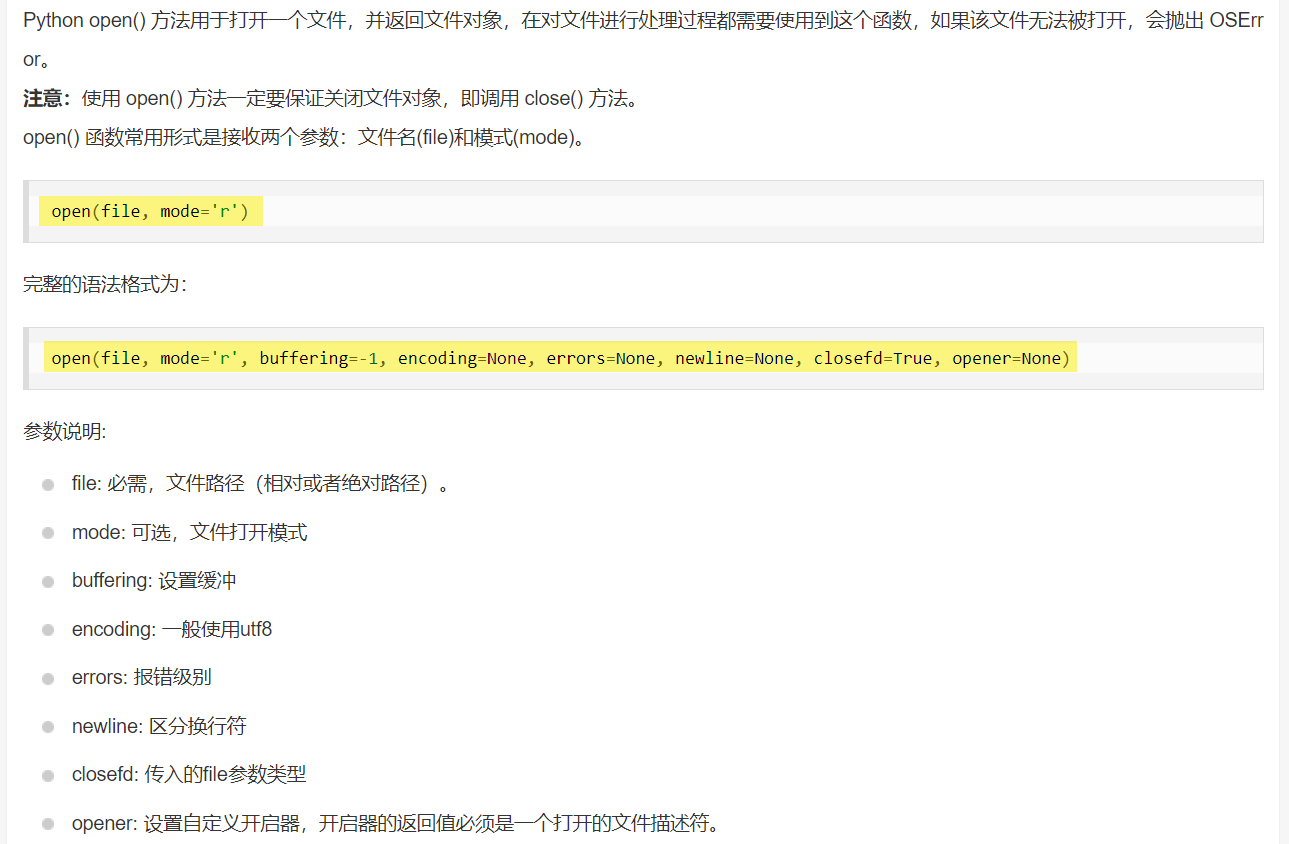文件处理在工作中还是比较常用的,好好的学习一下很有必要。

1.打开文件
在python中,我们可以使用open函数来打开一个已经存在的文件或者创建一个新文件。
open(⽂件名,访问模式)
举个例子:
# w 写⼊模式 r 读取模式open('test.txt','w')
说明:


2.关闭文件:
close( )
举个例子:
#新建一个文件,文件名为test.txtf=open('test.txt','w')#关闭这个文件f.close()
3.自动关闭文件
with open("test.txt", "w") as f:pass #执行完成后会自动关闭
4. 写入数据
# 打开⽂件 w write 写⼊ r read 读取f = open("test.txt", "w")# 写⼊数据f.write("hello world")# 关闭⽂件f.close()
5. 读取数据
(1)read
read(n) n为读取的字符数, 不设置则全部读取
with open("test.txt", "r") as f:content = f.read()
(2)readline
readline() 每次读取⼀⾏数据
with open("test.txt", "r") as f:content = f.readline()print(content, end="")
(3)readlines
readlines() ⼀次全部读出, 返回列表 (每⾏内容是⼀个元素)
with open("test.txt", "r") as f:content = f.readlines()print(content)
6.⽂件的定位读写
⽂件的读写都会改变⽂件的定位
f.tell() 可以查看⽂件的当前定位
f.seek(offset, whence) offset 基于whence做偏移
(1)whence 0 移动定位到⽂件开头 1定位不变 2移动定位到⽂件结尾
(2)只能对⽂件开头设置偏移(whence=1或者2时,offset只能为0)
这个我没怎么用过,以后遇到了再深入介绍。

